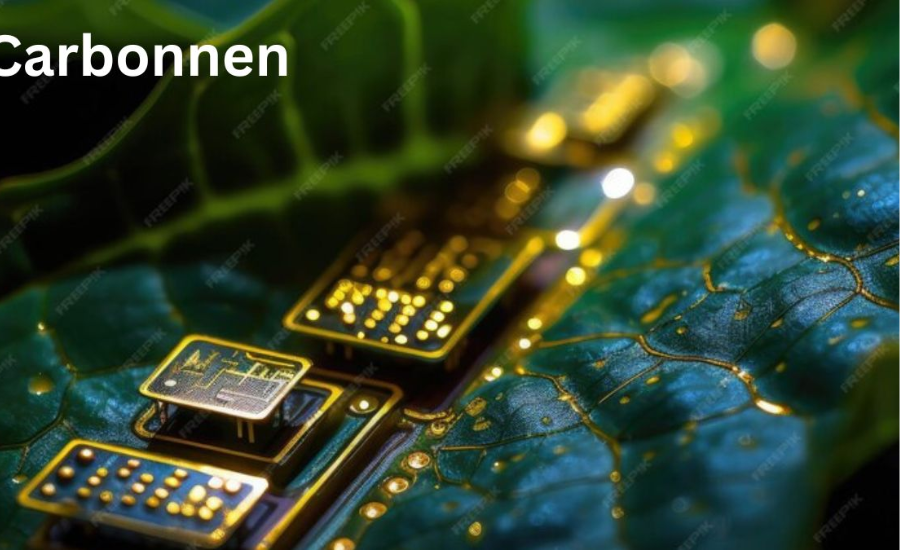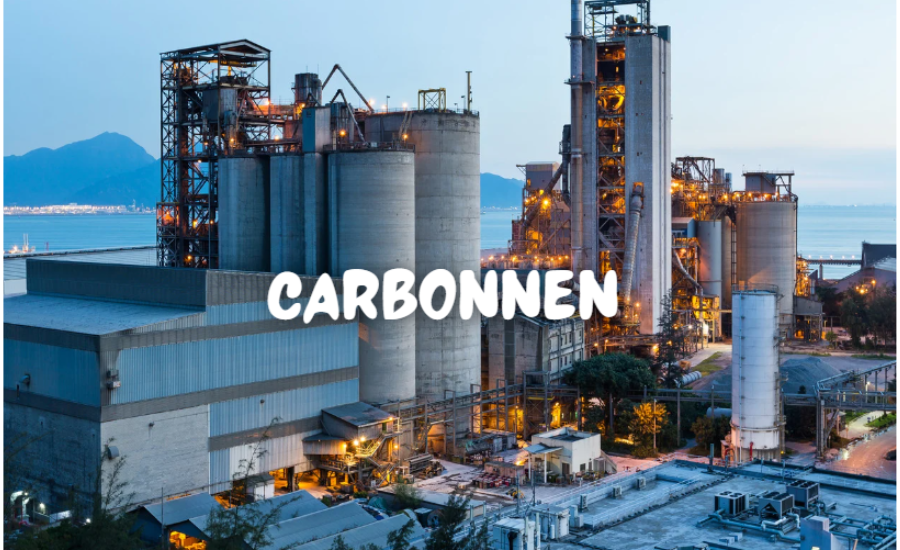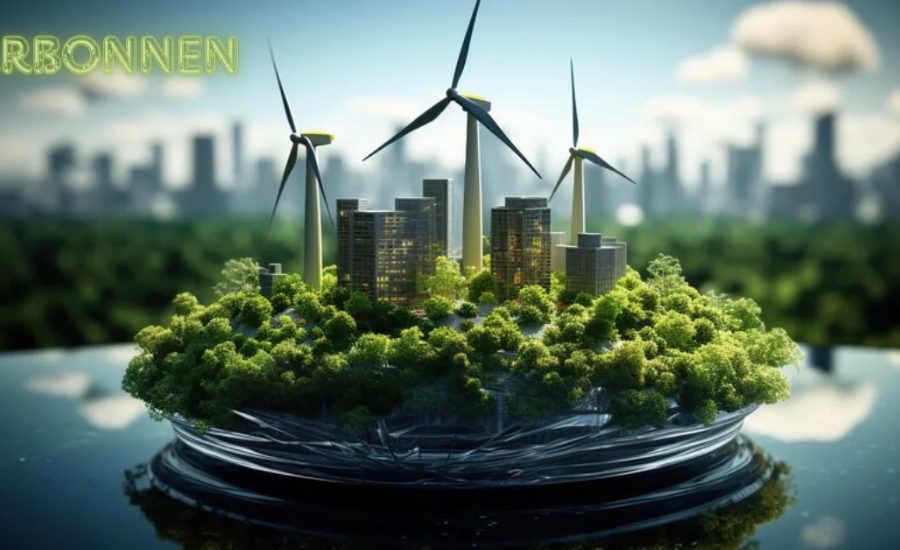In the realm of advanced materials, one substance stands out for its potential to transform various industries: Carbonnen. This innovative carbon allotrope exhibits unique properties and capabilities that could revolutionize technology and materials science as we know it. In this comprehensive guide, we will delve into everything you need to know about Carbonnen. We will cover its definition and properties, production processes, applications, benefits, challenges, recent innovations, and future prospects.
Definition And Properties Of Carbonnen

What Is Carbonnen?
Carbonnen is a newly discovered allotrope of carbon, akin to graphene and carbon nanotubes, characterized by its unique atomic arrangement, which imparts distinctive physical and chemical properties.
Unique Properties Of Carbonnen
- Mechanical Strength: Carbonnen exhibits extraordinary tensile strength, surpassing most known materials. Its atomic structure allows it to withstand immense forces without deformation, making it ideal for applications requiring robust materials.
- Electrical Conductivity: It possesses high electrical conductivity, facilitating efficient electron mobility. This property makes Carbonnen suitable for advanced electronic devices and components where rapid and reliable electrical transmission is critical.
- Thermal Conductivity: Carbonnen demonstrates exceptional thermal conductivity, enabling efficient heat transfer. This attribute is advantageous in technologies that require effective thermal management, such as in electronics and aerospace applications.
- Lightweight: Despite its remarkable strength and conductivity, Carbonnen is exceptionally lightweight. This characteristic contributes to its utility in industries where reducing weight is crucial for enhancing performance and efficiency.
In essence, Carbonnen represents a significant advancement in material science, offering a unique combination of strength, conductivity, thermal efficiency, and lightweight properties that open new possibilities in various technological and industrial applications.
Production Processes Of Carbonnen
Synthesis Techniques
Chemical Vapor Deposition (CVD): Widely used to produce high-quality Carbonnen films, CVD involves the deposition of carbon atoms onto a substrate under controlled conditions, allowing precise control over film thickness and properties.
Arc Discharge: This method utilizes an electric arc to vaporize carbon sources, resulting in the formation of Carbonnen structures. It’s effective for producing nanotubes and other complex carbon structures with specific properties.
Laser Ablation: Using laser pulses to evaporate carbon material, Laser Ablation allows for the precise formation and manipulation of Carbonnen structures. This technique is advantageous for creating tailored nanostructures with desired properties.
Challenges In Production
Scalability: One of the primary challenges in Carbonnen production is scaling up synthesis methods to meet commercial demand. Current techniques often struggle to produce Carbonnen in large quantities without compromising quality and cost-effectiveness.
Purity and Quality Control: Ensuring consistent purity and quality of Carbonnen is crucial for its successful application in sensitive technologies. Contaminants or variations in atomic structure can significantly impact its performance and reliability.
Applications Of Carbonnen

Electronics And Computing
Transistors: Carbonnen-based transistors offer the potential for faster and more efficient computing due to their high electron mobility and conductivity. This could lead to advancements in semiconductor technology, enabling smaller, more powerful electronic devices.
Flexible Electronics: Its inherent flexibility makes Carbonnen well-suited for applications in wearable technology and foldable devices. The material’s ability to maintain conductivity and structural integrity under bending and stretching enhances durability and functionality in these devices.
Energy Storage
Batteries: Incorporating Carbonnen into battery electrodes can enhance energy density and reduce charging times. Its high surface area and electrical conductivity improve electrode performance, leading to more efficient energy storage solutions for portable electronics and electric vehicles.
Supercapacitors: Carbonnen’s properties also benefit supercapacitors by increasing energy storage capacity and enabling rapid charge and discharge cycles. This makes it valuable for applications requiring high-power output and quick energy delivery, such as in renewable energy systems and hybrid vehicles.
Structural Materials
Aerospace: The combination of exceptional strength and lightweight properties makes Carbonnen suitable for aerospace components. It can replace traditional materials, reducing weight without compromising structural integrity, thereby improving fuel efficiency and performance of aircraft and spacecraft.
Construction: In construction, Carbonnen can be used to create stronger and more durable materials. Its high tensile strength and corrosion resistance make it ideal for reinforcing concrete, enhancing building resilience and longevity.
Environmental Applications
Carbonnen’s porous structure enables effective filtration of contaminants from water, offering a sustainable solution for improving water quality in various applications from industrial to household settings.
Air Filtration: Utilizing Carbonnen in air filters can effectively capture pollutants and particulate matter, improving air quality and reducing health risks associated with air pollution in indoor and outdoor environments.
These diverse applications highlight Carbonnen’s potential to revolutionize various industries, from electronics and energy storage to construction and environmental sustainability, through its unique combination of properties and versatile applications. Continued research and development efforts are essential to fully harnessing its capabilities and overcoming current production challenges.
Benefits Of Carbonnen

Enhanced Performance
Carbonnen’s exceptional properties enable the development of materials and devices that surpass traditional counterparts in performance metrics. Its high strength-to-weight ratio and conductivity enhance efficiency and durability in various applications. For example, in electronics, Carbonnen-based components promise faster processing speeds and reduced energy consumption, while in structural materials, its strength and lightweight nature improve performance and longevity.
Sustainability
As a carbon-based material, Carbonnen holds promise for sustainable development. Its potential to be sourced from renewable carbon sources, coupled with efficient production techniques, could reduce reliance on finite resources and mitigate environmental impact. This aspect is particularly significant in industries seeking greener alternatives, such as renewable energy technologies and environmentally friendly manufacturing processes.
Innovation Potential
The unique properties of Carbonnen stimulate innovation across multiple industries. In electronics, its conductivity and flexibility enable advancements in wearable technology and high-performance computing. In energy storage, Carbonnen’s ability to enhance battery and supercapacitor performance supports the transition to more efficient energy storage solutions.
Moreover, in environmental technologies, its use in water purification and air filtration systems addresses critical challenges related to resource sustainability and pollution control.
Overall, Carbonnen represents a paradigm shift in material science, offering opportunities for transformative innovation and sustainable development across diverse sectors. Continued research and development efforts are crucial to fully unlock its potential and accelerate its adoption in commercial applications.
Challenges In Utilizing Carbonnen
High Production Costs
The current production methods of Carbonnen are costly, posing a barrier to its widespread adoption. These expenses stem from the intricate synthesis processes and the need for precise control over material properties. Addressing cost-effectiveness through advancements in manufacturing techniques and scalability is crucial to making Carbonnen more economically viable for industrial applications.
Integration With Existing Technologies
Integrating Carbonnen into existing manufacturing processes presents challenges due to its unique properties and production requirements. Research and development efforts are necessary to streamline compatibility with established technologies, ensuring seamless incorporation across various industries. This includes optimizing production methods and adapting manufacturing lines to accommodate the specific characteristics of Carbonnen.
Health And Safety Concerns
Understanding the health and safety implications of Carbonnen is paramount for its responsible utilization. As with any novel material, comprehensive studies are essential to assess potential risks associated with production, handling, and disposal. This includes evaluating exposure risks, toxicity levels, and environmental impact to establish guidelines and safeguards for safe use in industrial and consumer applications.
Addressing these challenges through collaborative research, innovation in production techniques, and rigorous safety assessments will be instrumental in realizing Carbonnen’s full potential while ensuring sustainable and responsible deployment in diverse technological and industrial contexts.
Recent Innovations In Carbonnen
Advanced Synthesis Methods
Researchers are actively developing new synthesis techniques aimed at enhancing the quality and scalability of Carbonnen production. These advancements seek to optimize existing methods like Chemical Vapor Deposition (CVD), Arc Discharge, and Laser Ablation, as well as explore novel approaches to achieve greater control over material properties and increase production efficiency.
Novel Applications
Innovative applications of Carbonnen are under exploration, pushing the boundaries of its capabilities across diverse fields. For instance, in quantum computing, Carbonnen’s unique electronic properties could enable the development of more efficient quantum processors and sensors. Additionally, in advanced medical devices, its biocompatibility and structural versatility hold promise for next-generation implants and diagnostic tools, contributing to advancements in healthcare technology.
Enhanced Material Properties
Ongoing research endeavors aim to further enhance Carbonnen’s already impressive properties. Efforts are focused on increasing its thermal conductivity to improve heat management in electronics and enhancing mechanical strength for applications in aerospace and structural engineering. These enhancements are crucial for expanding the range of industries that can benefit from Carbonnen’s exceptional performance characteristics.
Through continuous innovation and collaborative research efforts, the potential of Carbonnen as a transformative material is being realized, paving the way for breakthroughs in technology, medicine, and sustainable development. By addressing synthesis challenges, exploring new applications, and refining material properties, researchers are laying the groundwork for Carbonnen to revolutionize various sectors and drive future technological advancements.
Future Prospects Of Carbonnen
Industrial Adoption
As production methods for Carbonnen improve and costs decrease, the material is poised for increased adoption across diverse industries. These advancements are expected to make Carbonnen more economically viable for applications ranging from electronics to aerospace. Its unique properties, including high strength-to-weight ratio and conductivity, position it as a desirable material for enhancing efficiency and performance in various industrial processes and products.
Research And Development
Continued investment in research and development holds the potential to uncover new applications and further enhance the properties of Carbonnen. Ongoing efforts are aimed at refining synthesis techniques, exploring novel uses in fields such as quantum computing and medical devices, and optimizing its environmental and economic sustainability. This commitment to innovation is essential for unlocking Carbonnen’s full potential and maintaining competitiveness in global markets.
Sustainability Impact
The integration of Carbonnen into sustainable technologies has the potential to make a significant impact on global challenges such as climate change and resource scarcity. By leveraging its properties in energy storage, water purification, and lightweight materials for transportation, Carbonnen can contribute to reducing carbon emissions, improving resource efficiency, and promoting environmental stewardship. Its role in enabling greener technologies underscores its importance in advancing towards a more sustainable future.
In summary, as Carbonnen progresses from research breakthroughs to practical applications, its adoption in industry is expected to grow, driven by advancements in production, ongoing R&D initiatives, and its potential to support sustainable development goals worldwide. Continued collaboration and innovation will be key to maximizing the benefits of Carbonnen across diverse sectors and addressing pressing global challenges.
Frequently Asked Questions (FAQs) About Carbonnen
Q: What makes Carbonnen different from other carbon allotropes?
Carbonnen stands out due to its unique atomic structure, which grants it exceptional properties such as high tensile strength, superior electrical and thermal conductivity, and lightweight characteristics. These qualities distinguish it from other carbon allotropes like graphene and carbon nanotubes.
Q: What are the primary methods for synthesizing Carbonnen?
The primary methods for synthesizing Carbonnen include Chemical Vapor Deposition (CVD), Arc Discharge, and Laser Ablation. Each technique involves specific processes to arrange carbon atoms into the distinct structure characteristic of Carbonnen.
Q: Which industries stand to benefit the most from Carbonnen?
Industries such as electronics and computing, energy storage, aerospace, construction, and environmental technologies are poised to benefit significantly from Carbonnen. Its unique properties and capabilities make it suitable for enhancing performance and efficiency in various industrial applications.
Q: What are the main challenges in producing Carbonnen?
The main challenges in producing Carbonnen include scaling up production to meet commercial demand, ensuring consistent quality and purity, and addressing the high costs associated with current manufacturing methods.
Q: How can Carbonnen contribute to sustainability?
Carbonnen, being composed primarily of carbon, holds the potential for production from renewable sources. Its use in developing more efficient and durable materials and devices supports sustainable development goals, addressing global challenges such as climate change and resource scarcity.
Q: Are there any health and safety concerns associated with Carbonnen?
Like any new material, understanding the health and safety implications of Carbonnen is essential. Comprehensive studies are needed to ensure its safe handling and usage, mitigating potential risks to human health and the environment.
Q: What recent innovations have been made in the field of Carbonnen?
Recent innovations in Carbonnen include advancements in synthesis methods aimed at improving production quality and scalability. There’s also ongoing exploration of novel applications such as in quantum computing and medical devices, alongside efforts to enhance its existing material properties.
Q: What is the future outlook for Carbonnen?
The future outlook for Carbonnen is promising, with anticipated increased adoption across industries as production methods evolve and costs decrease. Continued investment in research and development is expected to uncover new applications and further enhance its properties, solidifying its role in sustainable technologies and various other sectors.
Conclusion
Carbonnen represents a groundbreaking advancement in advanced materials, poised to revolutionize numerous industries. Its exceptional properties—such as outstanding mechanical strength, high electrical and thermal conductivity, and lightweight nature—position it as a pivotal material for future technological innovations.
Despite challenges in scalability and production costs, ongoing research and development efforts are paving the way for broader industrial adoption. Innovations in synthesis methods and exploration of new applications are expanding Carbonnen’s potential impact across electronics, energy storage, aerospace, construction, and environmental technologies.
Furthermore, Carbonnen’s potential to contribute to sustainability is significant, offering solutions to global challenges like climate change and resource scarcity. Its ability to enhance performance and efficiency in various applications makes it a crucial component in advancing towards sustainable development goals.
In essence, Carbonnen’s promise lies in its capacity to drive performance improvements, foster innovation, and support sustainable practices. As we continue to explore and unlock its full potential, Carbonnen is set to play a pivotal role in shaping the future of advanced materials and technologies, driving forward progress across diverse industries.
Get the latest alerts and updates directly. Pudelek!
